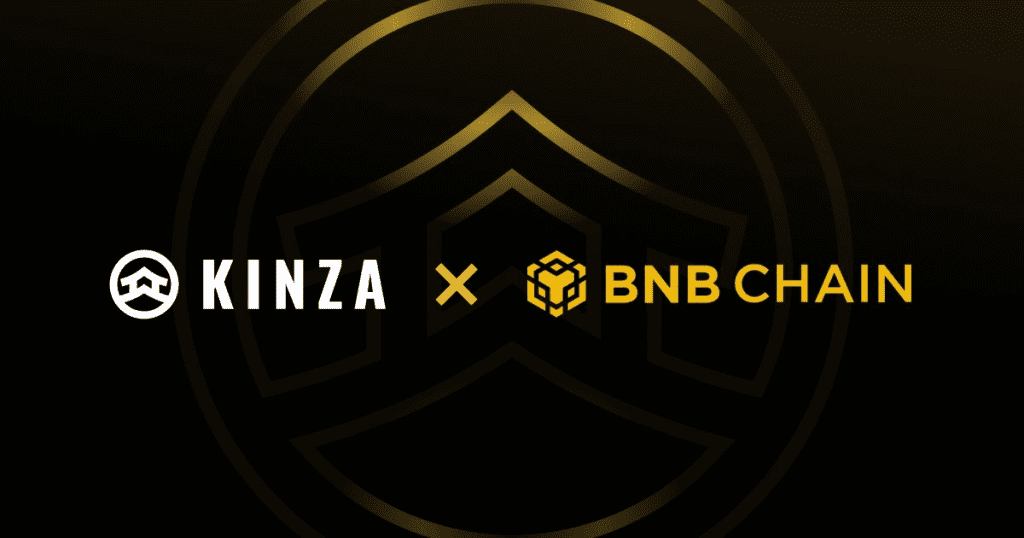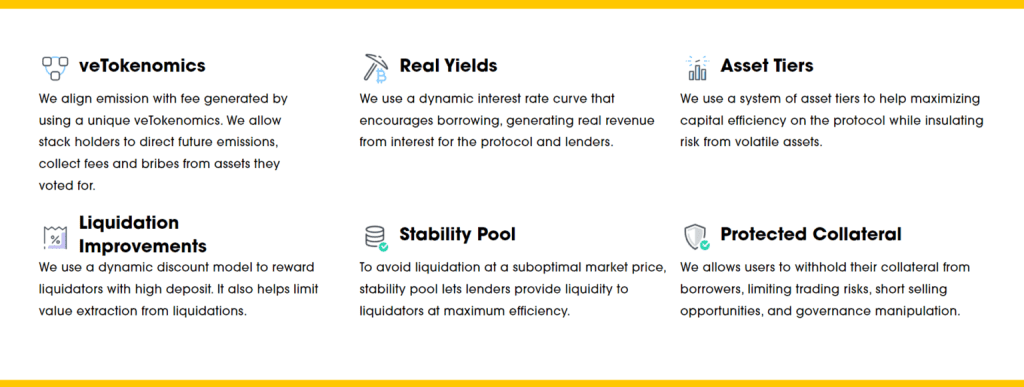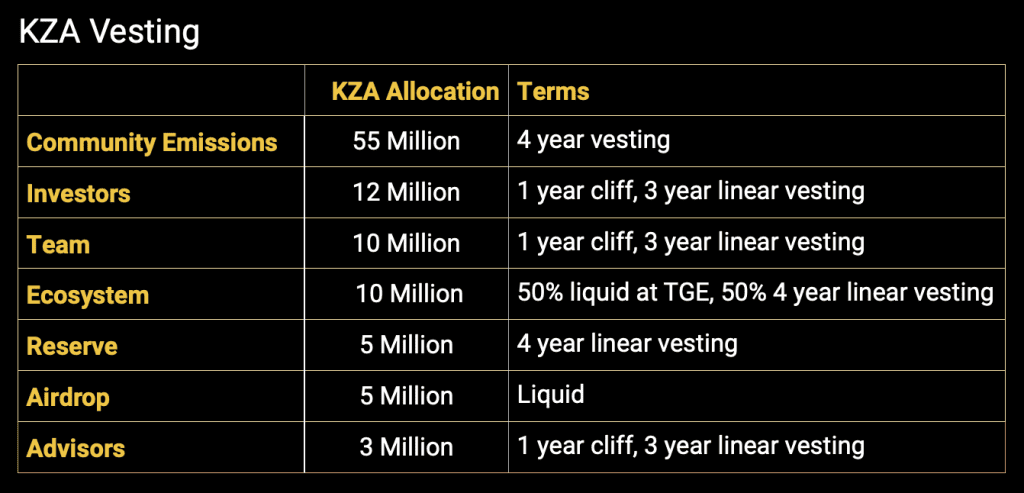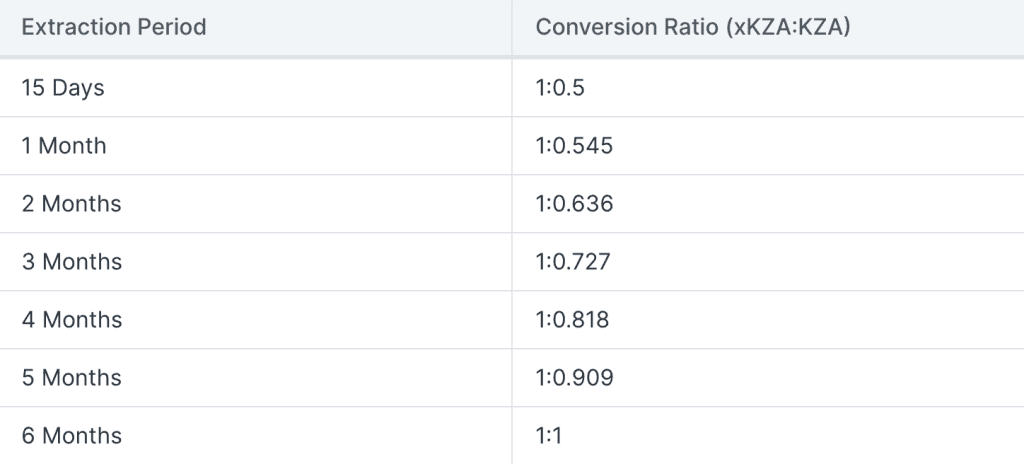Kinza Finance is a project that recently participated in and won the MVB VI program organized by Binance Labs. It is a lending protocol that focuses on security and a ve-Real-Yiled tokenomics model to attract initial users. Today, let’s learn details about this project with Coincu through the Kinza Finance Review article.


What is Kinza Finance?
Kinza Finance is a decentralized lending protocol operating on the Binance Smart Chain (BSC), aimed at offering users a seamless and highly adaptable DeFi lending experience. Distinguished by its non-custodial nature, permissionless functionality, and robust security framework, Kinza Finance integrates sophisticated DeFi mechanisms and solutions, poised to reshape the landscape of decentralized finance.
At its core, Kinza Finance facilitates the lending and borrowing of crypto assets on the BNB Chain, harnessing the power of smart contracts to establish lending markets in the form of liquidity pool contracts.


Within these contracts, lenders contribute crypto assets to furnish liquidity, while borrowers collateralize assets to access borrowing opportunities within the same contract. Notably, lenders stand to earn a share of the interest accrued from borrowers, fostering a mutually beneficial ecosystem.
Borrowers are also incentivized through the allocation of KZA tokens, the native governance token of Kinza Finance. These tokens serve as rewards, providing borrowers with additional value alongside their borrowing activities. Furthermore, borrowers can partake in the KZA token’s inflationary model, allowing them to earn a fraction of the token supply over time.


Moreover, Kinza Finance introduces a unique governance model inspired by the ve(3,3) framework, empowering KZA token holders with the ability to stake their tokens and participate in protocol governance. This mechanism underscores Kinza Finance’s commitment to community-driven decision-making and ensures that stakeholders have a say in the platform’s evolution.
Read more: BracketX Review: Derivatives Platform Friendly To Web3 Users
Kinza Finance highlights
With a keen focus on accessibility, security, sustainability, real yield, and ve(3,3)-inspired emissions, Kinza Finance promises a transformative experience for investors and traders alike. Kinza Finance has the following important features:
Leveraging the power of blockchain, Kinza Finance pioneers decentralized finance opportunities, democratizing access to trading and investing. This groundbreaking initiative ensures financial inclusivity, empowering individuals to become self-reliant while offering avenues to generate profits through tokens, all without the necessity to liquidate investment positions.
Recognizing the paramount importance of security in the DeFi ecosystem, Kinza Finance fortifies its platform with robust measures.
Their lending protocol serves as a decentralized risk management department, safeguarding the interests of both individual and institutional investors and assets. Employing advanced security techniques such as “Asset Isolation,” Kinza Finance sets new benchmarks for safety within the industry.
At the core of Kinza Finance’s mission lies a commitment to the sustainability of lending markets. By fostering deeper liquidity in these markets, they pave the way for a more resilient financial ecosystem. Through a meticulously crafted emissions mechanism based on the ve(3,3) model, Kinza Finance incentivizes user participation, thereby stimulating lending activities and enhancing market liquidity.
In addition to incentivizing lending, Kinza Finance places a strong emphasis on real yield. By offering competitive incentives and effective interest rates, the platform creates an environment conducive for participants to deposit funds, ensuring sustainable real yields for lenders and token holders alike.
Drawing inspiration from the ve(3,3) model, Kinza Finance introduces a novel emissions mechanism to drive liquidity provision. Through a democratic voting system, this innovative approach tailors Inspired Emissions towards specific lending markets, thereby rewarding borrowers and enhancing the appeal for liquidity providers.
Kinza Finance features
Let’s explore the core functionalities of this groundbreaking platform:
At the heart of Kinza Finance lies the Market Interface, a hub that showcases a diverse range of assets available for lending or borrowing. Users can access vital information such as Supply APY and Borrow APY, providing insight into the interest rates for lenders and borrowers, respectively.
Additionally, the Market feature displays crucial metrics including Total Supply, Total Borrow, Available assets for borrowing, and Loan-to-Value (LTV) ratio, empowering users to make informed decisions based on market dynamics and asset availability.
The Dashboard serves as a personalized space for users, offering a comprehensive overview of their lending and borrowing activities. Here, users can track metrics such as My Supplies and My Borrows, providing a snapshot of their current portfolio positions.
Furthermore, the Dashboard highlights available assets for lending and borrowing, enabling users to efficiently manage their assets and optimize their DeFi strategies.
Kinza Finance incentivizes user participation through its Rewards feature, offering xKZA tokens to ve-holders or borrowers. Users can claim these rewards directly from the platform, enhancing their earning potential and fostering community engagement. By aligning incentives with user actions, Kinza Finance creates a vibrant ecosystem where participants are rewarded for their contributions.
The Vote interface empowers ve-holders to actively participate in governance decisions within the Kinza Finance ecosystem. Through democratic voting mechanisms, ve-holders can influence the allocation of “bribes” from Bribers to specific liquidity pools.
These bribes serve as incentives to attract ve-holder votes, with profits distributed from the selected pools at the end of each period (Epochs). By decentralizing governance processes, Kinza Finance promotes transparency and community-driven decision-making.
Because ve-holders will receive their “bribes” at the conclusion of each period (Epochs), bribers can use this interface to deposit their “bribes” into each liquidity pool in an effort to sway them to vote.
Lorem ipsum dolor sit amet, consectetur adipiscing elit. Ut elit tellus, luctus nec ullamcorper mattis, pulvinar dapibus leo.
Elements Kinza Finance
- Supply APY: is the interest rate received when providing liquidity to that pool.
- Borrow APY: is the interest rate the borrower must pay when borrowing assets in that pool.
- Total Supply: the number of assets deposited into that pool
- Total Borrow: the amount of assets in the pool that have been used by the borrower
- Available: amount of remaining assets, available to borrow in the pool.
- LTV: Maximum % that users can borrow based on their collateral.
Kinza Finance participants
Here’s a breakdown of the key roles within the Kinza Finance ecosystem:
These individuals play a pivotal role by injecting liquidity into the protocol pool. In return, they receive a share of the profits generated from the interest paid by borrowers. Lenders essentially act as the backbone of the lending process, providing the necessary capital for borrowers to access.
Users who deposit digital assets as collateral and leverage them to borrow other assets form the borrower segment. The interest rates they incur are dependent on the type of loan asset utilized. A portion of these interest rates is shared with the lender, while another part is allocated to the protocol, ensuring sustainability and growth.
Holding platform tokens and staking them distinguishes ve-Holders. In exchange, they receive veTokens (xKZA). These tokens grant holders the privilege to participate in voting processes concerning the token’s emission levels for borrowers. Additionally, ve-Holders reap profits from borrower interest, aligning incentives with the platform’s success and governance.
Participants with the ability to contribute funds to the “bribe” fund of each liquidity pool constitute the Bribers. These funds are later distributed among ve-Holders within the group at the end of predefined periods known as Epochs. Such a mechanism incentivizes ve-Holders to vote for increased rewards (emissions) for borrowers, fostering engagement and efficiency within the ecosystem.
Kinza Finance’s working mechanism
Kinza Finance’s operating mechanism will revolve around two main components: lenders and borrowers:
Lender’s Operating Mechanism in Kinza Finance
Lenders, the backbone of Kinza Finance, are individuals who deposit various crypto assets into the platform and, in return, receive kTokens representing their lending activity. These assets can range from popular cryptocurrencies like Ethereum (ETH) and Binance Coin (BNB) to stablecoins such as Tether (USDT) and USD Coin (USDC). Each kToken holds a value equivalent to the deposited assets at a 1:1 ratio.
The beauty of kTokens lies in their interest-bearing nature. As lenders contribute liquidity, their kTokens start accruing interest proportionally to their lending position. Moreover, these kTokens can be freely transferred or traded among users within the Kinza Finance ecosystem.


To participate as a lender, users simply connect their DeFi wallet to the Kinza Finance platform and deposit their chosen assets. Once deposited, the liquidity becomes automatically accessible to borrowers, initiating the process of interest generation for the lender.
Borrower’s Operating Mechanism in Kinza Finance
On the other side of the spectrum, borrowers leverage Kinza Finance by depositing crypto assets as collateral to obtain loans in different forms. Similar to lenders, borrowers receive tokens, known as dTokens, representing their debt obligations. These dTokens are extinguished from circulation upon full repayment of the loan by the borrower.
The borrowing capacity of a user is determined by the Loan-to-Value (LTV) index, which evaluates the risk associated with the collateral deposited. For instance, if a borrower pledges 5 ETH (valued at $13,250) as collateral to borrow USDT and the LTV ratio for that particular pool is 60%, the maximum amount they can borrow is calculated to be 60% of the collateral’s value, resulting in a maximum loan of 7950 USDT.
Kinza Finance tokens
With the ve(3,3) mechanism, the Kinza token design is focused on providing Real Returns. This real yield comes from the interest the borrower must pay. By encouraging borrowing through ve(3,3), investors will receive more interest and bring more real profits to users.
Kinza Finance uses one main token for the protocol, KZA. After placing the bet. The staked KZA token will become xKZA. To participate in voting, you need xKZA.
KZA token key metrics
- Token name:
- Ticker: KZA
- Token type: Platform token
- Blockchain: BNB Chain
- Token standard: BEP20
- Contract: Not yet available (Token has not officially launched yet)
- Total supply: 100,000,000 KZA
KZA token allocation
- 12% – Investor: locked in for 1 year, and distributed linearly for 3 years
- 3% – Advisor: lock in 1 year, and linear allocation over 3 years
- 10% – Team: locked for 1 year, and distributed linearly over 3 years
- 55% – Community: unlocked in 4 years
- 5% – Reserve: unlocked for 4 years
- 10% – Ecosystem: 50% liquidity at TGE, remaining 50% distributed linearly over 4 years
- 5% – Airdrop: most of this is airdropped to those who provide liquidity before the TGE period (Currently, there is still no official information about TGE)


In order to be eligible to receive airdrops from the project in the future, users will also have the opportunity to engage in this aspect of the platform experience.
KZA token release schedule


Use cases
KZA: Empowering Borrowers and Users
KZA, the native token of Kinza Finance, serves as the cornerstone of the platform’s operations, offering various utilities to its holders:
Kinza Finance incentivizes liquidity provision by issuing KZA as rewards to borrowers in liquidity pools, selected weekly. This strategy not only encourages borrowing activities on the BNB Chain but also bolsters liquidity for Kinza Finance.
Early supporters and participants in liquidity provision before the Token Generation Event (TGE) are rewarded with KZA tokens through airdrops, fostering community engagement and participation.
Holders can stake their KZA tokens to earn xKZA at a 1:1 ratio, empowering them with governance rights and additional rewards within the ecosystem.
KZA holders can utilize their tokens to pay interest on loans and access various services offered by Kinza Finance, further enhancing the token’s utility and value proposition.


xKZA: Governance and Rewards Amplified
xKZA, an integral component of Kinza Finance’s ecosystem, offers holders enhanced governance capabilities and additional rewards:
Users stake their KZA tokens at a 1:1 ratio to generate xKZA tokens, which are then utilized for voting on the allocation of KZA tokens in future distributions, ensuring community-driven decision-making processes.
Holders of xKZA tokens receive a share of interest generated from the pools they support, along with incentives from borrowers, providing a sustainable mechanism for value accrual and participation.
xKZA holders have the flexibility to convert their tokens back to KZA, subject to a specified extraction time ranging from a minimum of 15 days to a maximum of 6 months. The conversion rate from xKZA to KZA increases gradually over time, ranging from 1:0.5 to 1:1, incentivizing long-term commitment and engagement within the ecosystem.


The remaining KZA will be burned if the user selects a time that is shorter than the maximum; during this time, xKZA can still be used for voting, and users can still split earnings and accept bribes, but only up to 50% of the value of xKZA.
Investors and Partners of Kinza Finance
There is currently no official information about the capital mobilization of Kinza Finance and their investors, other than the fact that Binance Labs invested an undisclosed amount in Kinza Finance after winning MVB VI (Most Valuable Builder VI). The project also has famous partners such as BNB Chain, Chainlink, The Graph, and Salus.


Conclusion of Kinza Finance Review
Kinza Finance is the first project to integrate the ve(3,3) model into Lending Pool; however, we need more time to observe whether this model is highly effective. While there are not many competitors, Kinza Finance will still face challenges in competing for market share with older projects.
Additionally, while reserve funds are important for lending platforms in terms of managing risks and ensuring sustainability, Kinza’s reserve fund has not received as much attention as it could, which will worry users. Hopefully, Coincu’s Kinza Finance Review article has helped you get more information about this project.
| DISCLAIMER: The information on this website is provided as general market commentary and does not constitute investment advice. We encourage you to do your own research before investing. |
Visited 3 times, 3 visit(s) today
Source: https://coincu.com/246509-kinza-finance-review/
